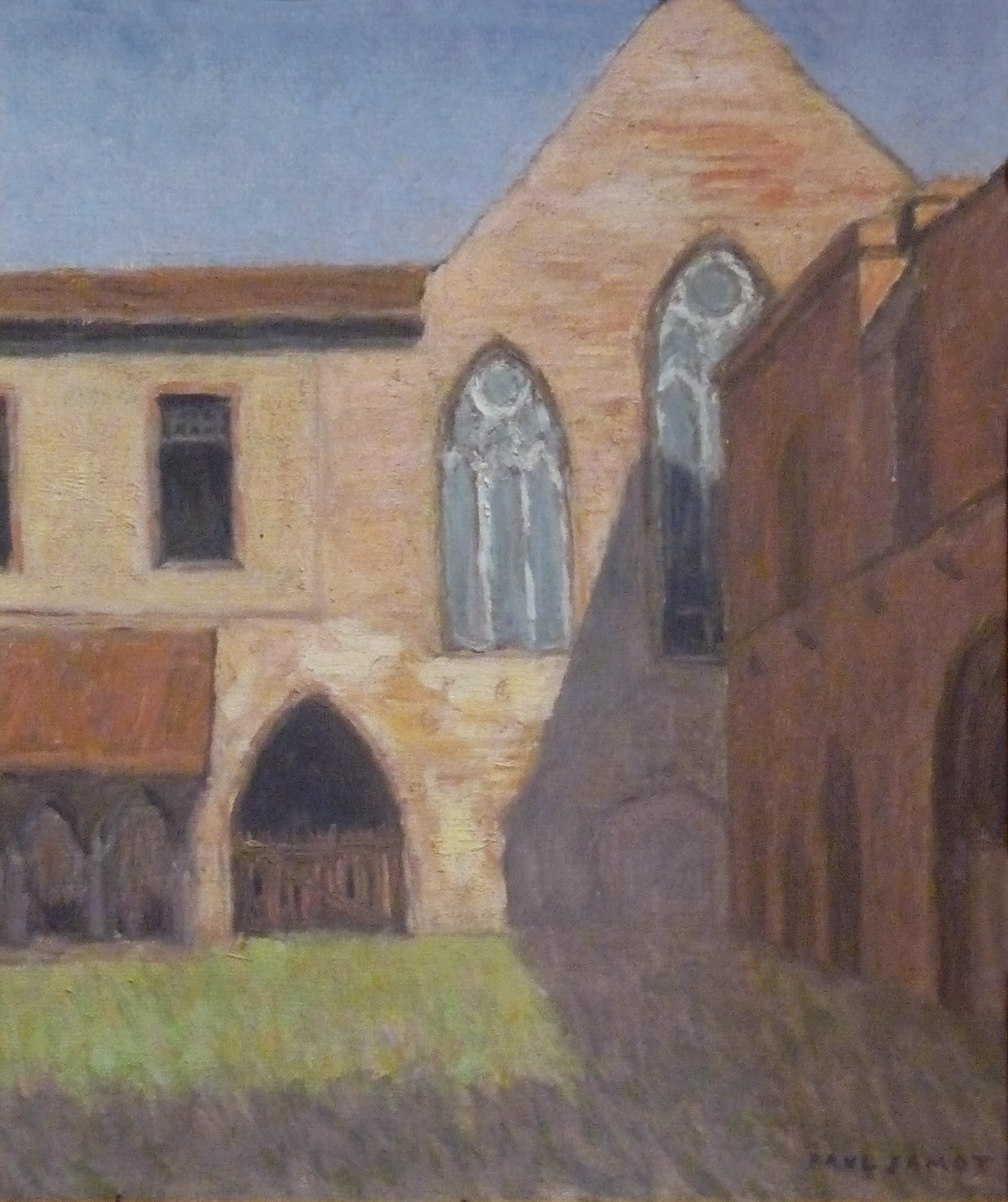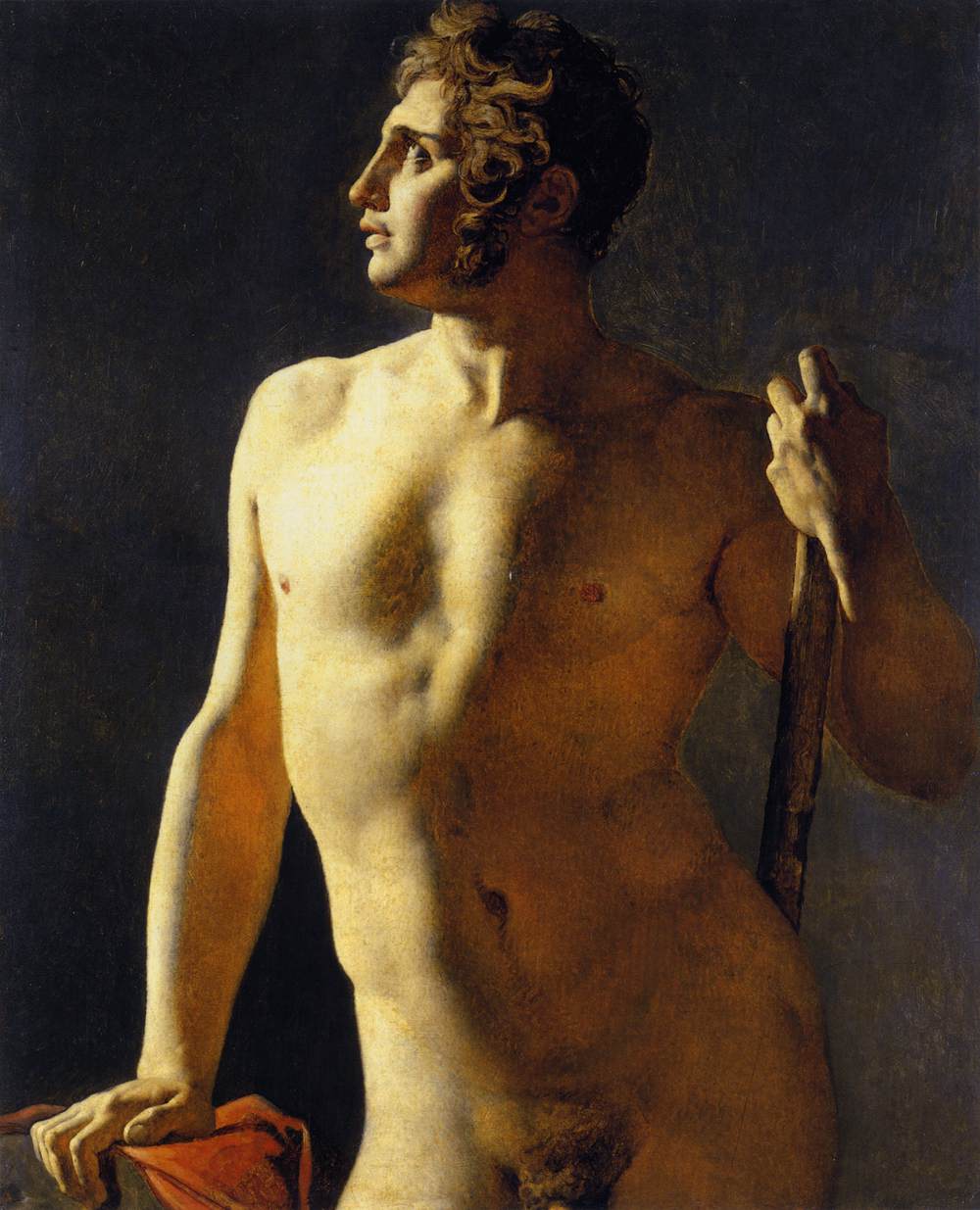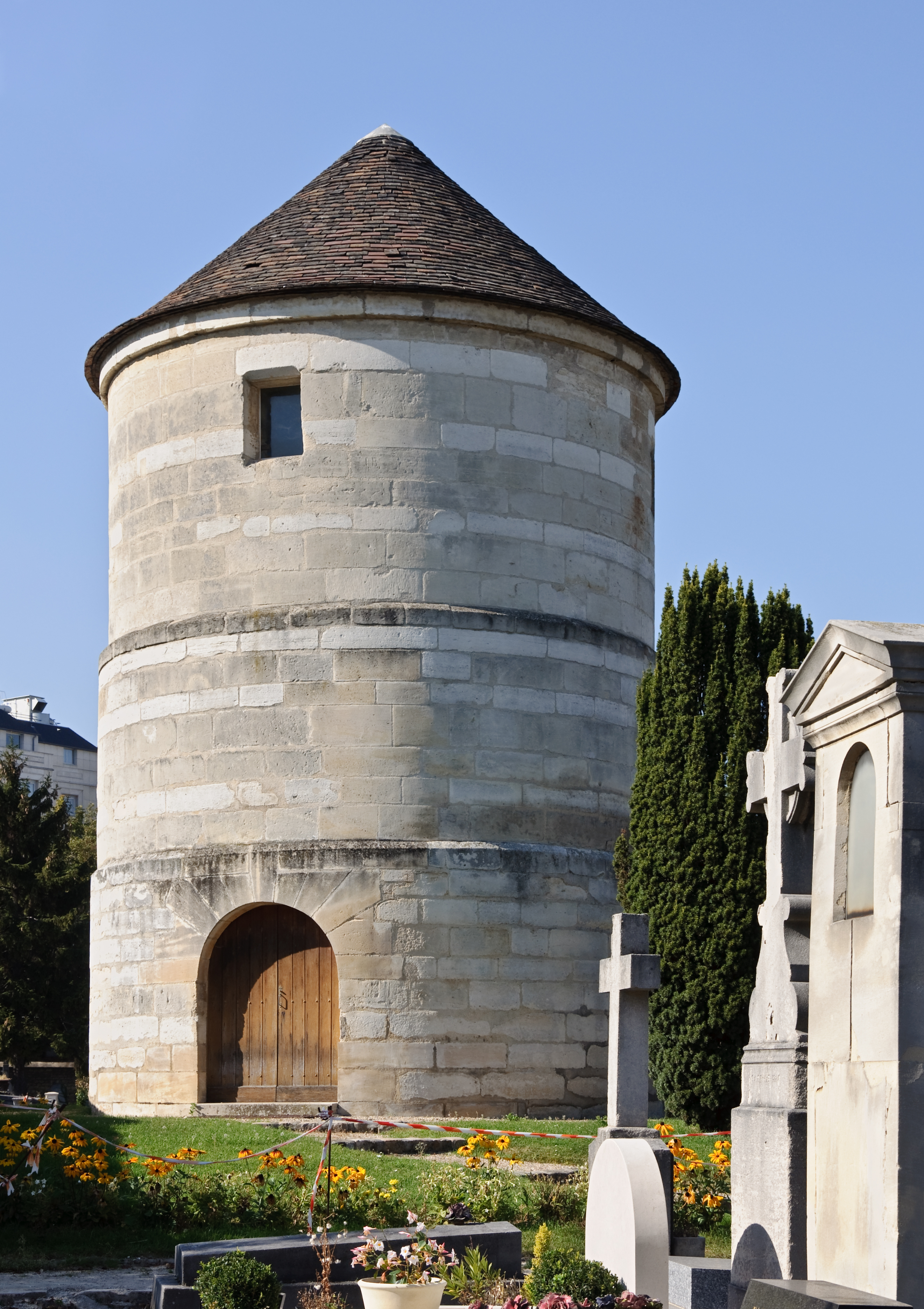|
Paul Jamot
Paul Jamot (22 December 1863 – 13 December 1939) was a French painter, art critic and museum curator. Biography An École normale supérieure alumni, Paul Jamot was a member of the French School at Athens (1887). He explored Argos and the valley of the Spercheios. He led the excavations in the valley of the Muses in Thespies between 1888 and 1891. He collected many inscriptions including that of the so-called stele of Hesiod. He published a travelogue: ''En Grèce avec Charalambos Eugénidis''. He became curator of national museums, a member of the Institute of France, commandeur of the Legion of Honour, honorary curator of the Louvre, Reims museum director from 1927 to 1939. He bequeathed to the city a rich collection of paintings, represented by Corot, Carpeaux, Courbet, Delacroix, Maurice Denis, Forain, Ingres, Picasso, Renoir, etc. and of valuable objects, as well as to the musée du Louvre, the musée du Luxembourg and the Carnavalet Museum. A room of the musée d� ... [...More Info...] [...Related Items...] OR: [Wikipedia] [Google] [Baidu] |
Villerville
Villerville () is a commune in the Calvados department in the Normandy region in northwestern France. the commune is located towards the eastern end of the coastline called the Côte Fleurie (Flowery Coast). Composer Francis Bayer (1938–2004) was born in Villerville. Population International relations Villerville is twinned with: *Hausen bei Würzburg (in Bavaria, Germany) See also *Communes of the Calvados department The following is a list of the 528 communes of the Calvados department of France. The communes cooperate in the following intercommunalities (as of 2020): External links |
Dominique Ingres
Jean-Auguste-Dominique Ingres ( , ; 29 August 1780 – 14 January 1867) was a French Neoclassicism, Neoclassical Painting, painter. Ingres was profoundly influenced by past artistic traditions and aspired to become the guardian of academic orthodoxy against the ascendant Romanticism (art), Romantic style. Although he considered himself a History painting, painter of history in the tradition of Nicolas Poussin and Jacques-Louis David, it is his portraits, both painted and drawn, that are recognized as his greatest legacy. His expressive distortions of form and space made him an important precursor of modern art, influencing Picasso, Matisse and other modernists. Born into a modest family in Montauban, he travelled to Paris to study in the studio of Jacques-Louis David, David. In 1802 he made his Paris Salon, Salon debut, and won the Prix de Rome for his painting ''The Ambassadors of Agamemnon in the tent of Achilles''. By the time he departed in 1806 for his residency in Rom ... [...More Info...] [...Related Items...] OR: [Wikipedia] [Google] [Baidu] |
Auguste Perret
Auguste Perret (12 February 1874 – 25 February 1954) was a French architect and a pioneer of the architectural use of reinforced concrete. His major works include the Théâtre des Champs-Élysées, the first Art Deco building in Paris; the Church of Notre-Dame du Raincy (1922–23); the Mobilier National in Paris (1937); and the French Economic, Social and Environmental Council building in Paris (1937–39). After World War II he designed a group of buildings in the centre of the port city of Le Havre, including St. Joseph's Church, Le Havre, to replace buildings destroyed by bombing during World War II. His reconstruction of the city is now a World Heritage Site for its exceptional urban planning and architecture. Early life and experiments (1874–1912) Auguste Perret was born in Ixelles, Belgium, where his father, a stonemason, had taken refuge after the Paris Commune. He received his early education in architecture in the family firm. He was accepted in the architecture ... [...More Info...] [...Related Items...] OR: [Wikipedia] [Google] [Baidu] |
Montparnasse Cemetery
Montparnasse Cemetery (french: link=no, Cimetière du Montparnasse) is a cemetery in the Montparnasse quarter of Paris, in the city's 14th arrondissement. The cemetery is roughly 47 acres and is the second largest cemetery in Paris. The cemetery has over 35,000 graves and approximately a thousand people are buried here each year. The cemetery contains 35,000 plots and is the resting place to a variety of individuals including political figures, philosophers, artists, actors, and writers. Additionally, in the cemetery one can find a number of tombs commemorating those who died in the Franco-Prussian war during the siege of Paris (1870–1871) and the Paris Commune (1871). History The cemetery was created at the beginning of the 19th century in the southern part of the city. At the same time there were cemeteries outside the city limits: Passy Cemetery to the west, Montmartre Cemetery to the north, and Père Lachaise Cemetery to the east. In the 16th century the intersecting ro ... [...More Info...] [...Related Items...] OR: [Wikipedia] [Google] [Baidu] |
Ernest Lawrence
Ernest Orlando Lawrence (August 8, 1901 – August 27, 1958) was an American nuclear physicist and winner of the Nobel Prize in Physics in 1939 for his invention of the cyclotron. He is known for his work on uranium-isotope separation for the Manhattan Project, as well as for founding the Lawrence Berkeley National Laboratory and the Lawrence Livermore National Laboratory. A graduate of the University of South Dakota and University of Minnesota, Lawrence obtained a PhD in physics at Yale in 1925. In 1928, he was hired as an associate professor of physics at the University of California, Berkeley, becoming the youngest full professor there two years later. In its library one evening, Lawrence was intrigued by a diagram of an accelerator that produced high-energy particles. He contemplated how it could be made compact, and came up with an idea for a circular accelerating chamber between the poles of an electromagnet. The result was the first cyclotron. Lawrence went on to ... [...More Info...] [...Related Items...] OR: [Wikipedia] [Google] [Baidu] |
René Lalique
René Jules Lalique (6 April 1860 – 1 May 1945) was a French jeweller, medallist, and glass designer known for his creations of glass art, perfume bottles, vases, jewellery, chandeliers, clocks, and automobile hood ornaments. Life Lalique's early life was spent learning the methods of design and art he would use in his later life. At the age of two, his family moved to the suburbs of Paris, but traveled to Aÿ for summer holidays. These trips influenced Lalique later on in his naturalistic glasswork. With the death of his father, Lalique began working as an apprentice to goldsmith Louis Aucoc in Paris. Lalique died on 1 May or 5 May 1945, in Paris. René Lalique was buried in Père Lachaise Cemetery in Paris, France. His granddaughter, Marie Claude-Lalique (b. 1936), was also a glass maker. She died on 14 April 2003 in Fort Myers, Florida. Education In 1872, when he was twelve, he entered the Collège Turgot where he started drawing and sketching. He attended evening ... [...More Info...] [...Related Items...] OR: [Wikipedia] [Google] [Baidu] |
Reims
Reims ( , , ; also spelled Rheims in English) is the most populous city in the French department of Marne, and the 12th most populous city in France. The city lies northeast of Paris on the Vesle river, a tributary of the Aisne. Founded by the Gauls, Reims became a major city in the Roman Empire. Reims later played a prominent ceremonial role in French monarchical history as the traditional site of the coronation of the kings of France. The royal anointing was performed at the Cathedral of Reims, which housed the Holy Ampulla of chrism allegedly brought by a white dove at the baptism of Frankish king Clovis I in 496. For this reason, Reims is often referred to in French as ("the Coronation City"). Reims is recognized for the diversity of its heritage, ranging from Romanesque to Art-déco. Reims Cathedral, the adjacent Palace of Tau, and the Abbey of Saint-Remi were listed together as a UNESCO World Heritage Site in 1991 because of their outstanding Romanesque a ... [...More Info...] [...Related Items...] OR: [Wikipedia] [Google] [Baidu] |
Palais Des Tuileries
The Tuileries Palace (french: Palais des Tuileries, ) was a royal and imperial palace in Paris which stood on the right bank of the River Seine, directly in front of the Louvre. It was the usual Parisian residence of most French monarchs, from Henry IV to Napoleon III, until it was burned by the Paris Commune in 1871. Built in 1564, it was gradually extended until it closed off the western end of the Louvre courtyard and displayed an immense façade of 266 metres. Since the destruction of the Tuileries, the Louvre courtyard has remained open and the site is now the location of the eastern end of the Tuileries Garden, forming an elevated terrace between the Place du Carrousel and the gardens proper. History Plan of Catherine de Medici (16th C.) The site of the Tuileries palace was originally just outside the walls of the city, in an area frequently flooded by the Seine as far as the present Rue Saint-Honore. The land was occupied by the workshops and kilns craftsmen wh ... [...More Info...] [...Related Items...] OR: [Wikipedia] [Google] [Baidu] |
Orangery
An orangery or orangerie was a room or a dedicated building on the grounds of fashionable residences of Northern Europe from the 17th to the 19th centuries where orange and other fruit trees were protected during the winter, as a very large form of greenhouse or conservatory. The orangery provided a luxurious extension of the normal range and season of woody plants, extending the protection which had long been afforded by the warmth offered from a masonry fruit wall. During the 17th century, fruits like orange, pomegranate, and bananas arrived in huge quantities to European ports. Since these plants were not adapted to the harsh European winters, orangeries were invented to protect and sustain them. The high cost of glass made orangeries a status symbol showing wealth and luxury. Gradually, due to technological advancements, orangeries became more of a classic architectural structure that enhanced the beauty of an estate garden, rather than a room used for wintering ... [...More Info...] [...Related Items...] OR: [Wikipedia] [Google] [Baidu] |
Museum Of Fine Arts, Reims
The Museum of Fine Arts (french: Musée des beaux-arts) is a fine arts museum in Reims, France. History :fr:Antoine Ferrand de Monthelon, Antoine Ferrand de Monthelon, founder of the school of drawings, bequeaths in 1752 his collection to the city of Reims. Organizer and first curator of the Museum of Reims (1793-1806), Nicolas Bergeat safeguarded works of art seized from the Catholic institutions in Reims and first official deposit was recorded on French Republican calendar, 10 Vendémiaire, Year II in the former hospice of Magneuses. The Museum of Fine Arts was founded in 1794 with objects seized during the French Revolution and was first housed in the city's Hôtel de Ville, Reims, town hall. Throughout the 19th century its collections grew via ... [...More Info...] [...Related Items...] OR: [Wikipedia] [Google] [Baidu] |








